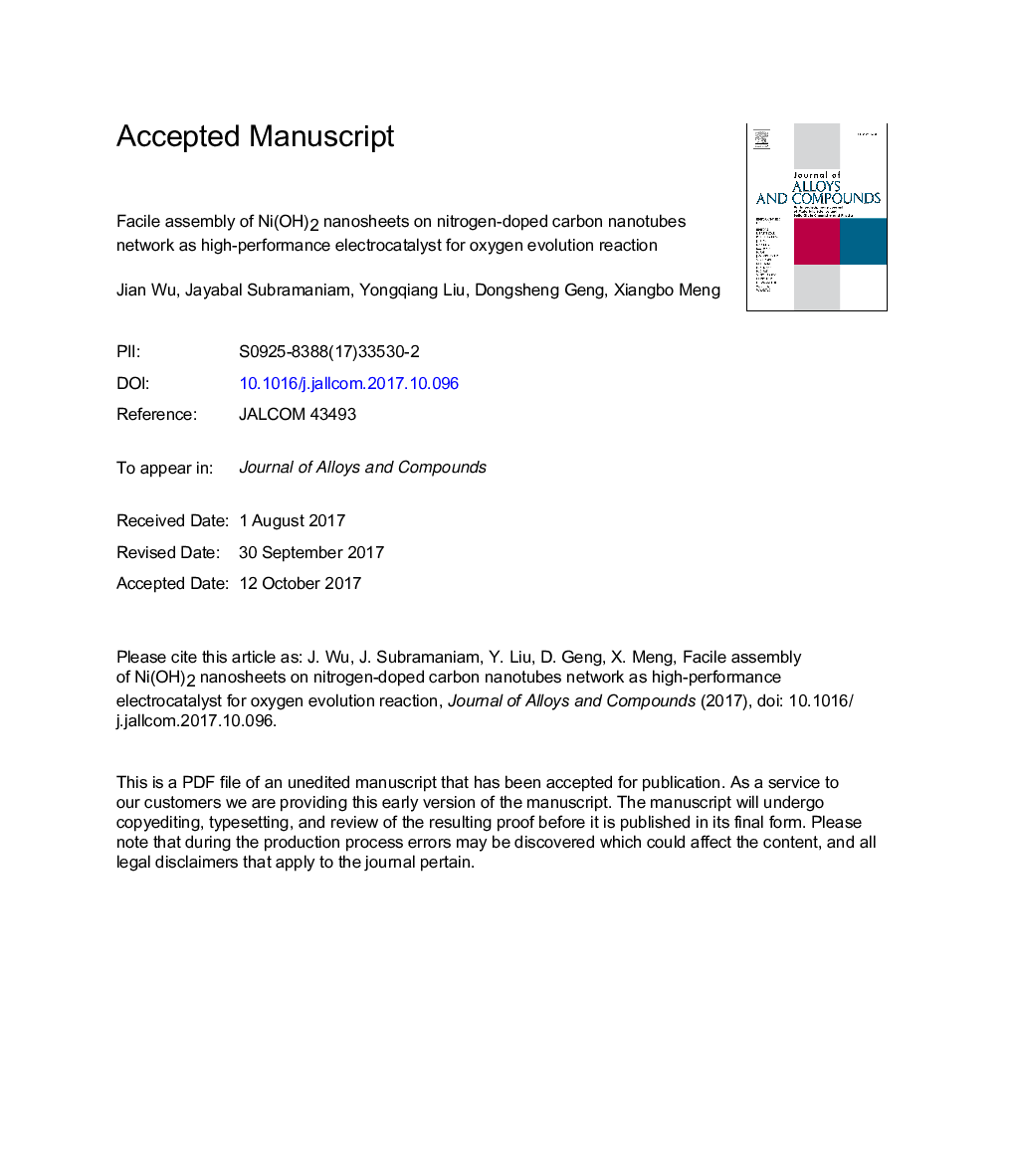| Article ID | Journal | Published Year | Pages | File Type |
|---|---|---|---|---|
| 5458101 | Journal of Alloys and Compounds | 2018 | 21 Pages |
Abstract
Developing non-noble metal-based electrocatalysts with cost-effective materials for water splitting is critical to clean energy generation and storage. However, the process of water splitting is greatly hindered by the oxygen evolution reaction (OER), which is kinetically sluggish and requires large overpotentials. Herein, we report an active and stable OER catalyst by electrodeposition of ultrathin Ni(OH)2 nanosheets on three-dimensional interwoven nitrogen-doped carbon nanotubes (N-CNTs). The Ni(OH)2 nanosheets grown on the N-CNTs afforded a current density of 10Â mAÂ cmâ2 at the overpotential of only 254Â mV, smaller than the commercial IrO2 catalyst. Moreover, the as-prepared catalyst shows long-term durability almost without degradation over 100Â h. The excellent OER activity can be ascribed to the unique layered structure of Ni(OH)2, the ultrathin and interconnected features of the nanosheets, and the three-dimensional (3D) porous conducting network of the N-CNTs. The rational design strategy can be extended to the preparation of other non-precious metal catalysts with enhanced OER performance.
Keywords
Related Topics
Physical Sciences and Engineering
Materials Science
Metals and Alloys
Authors
Jian Wu, Jayabal Subramaniam, Yongqiang Liu, Dongsheng Geng, Xiangbo Meng,
